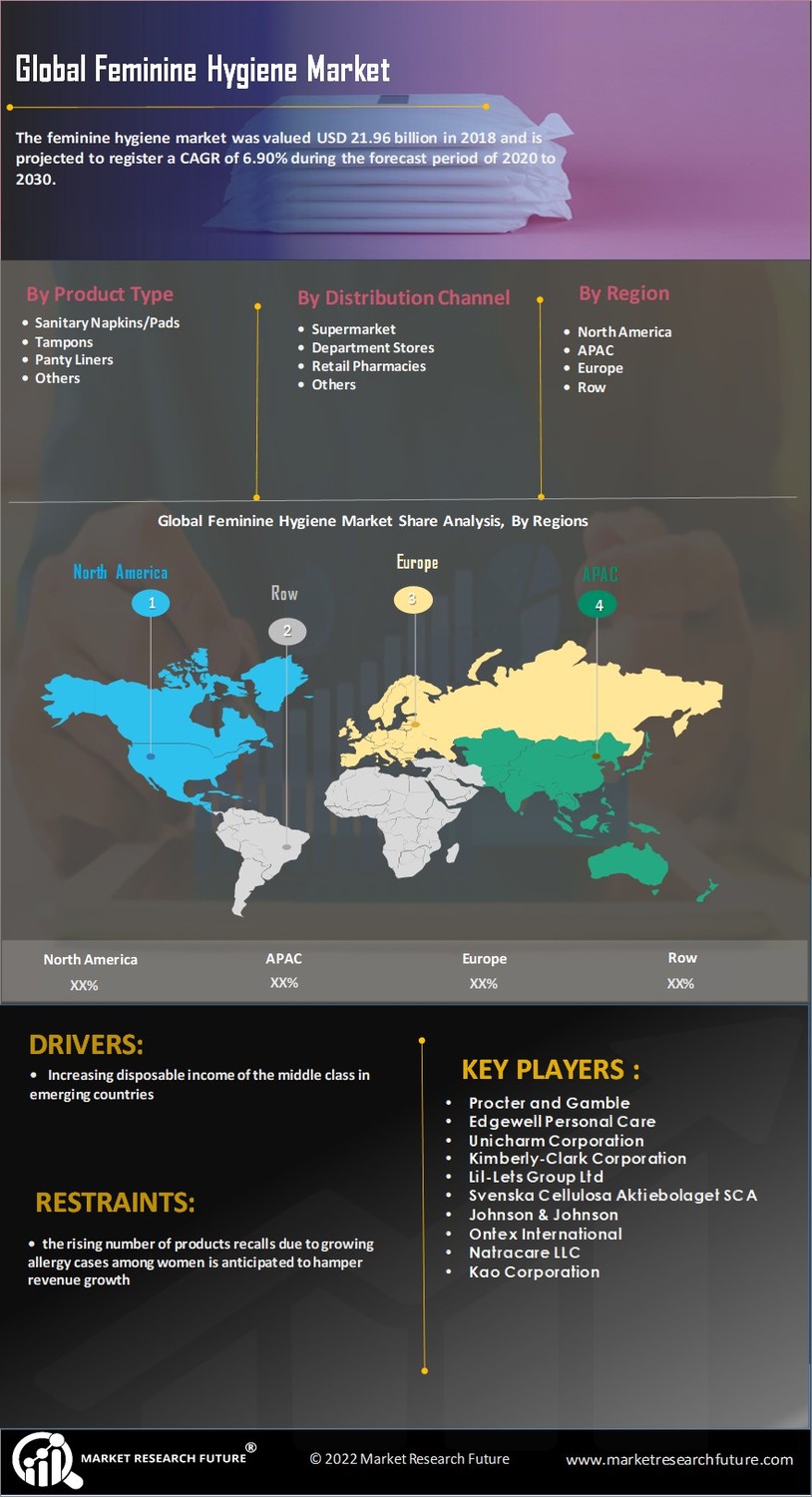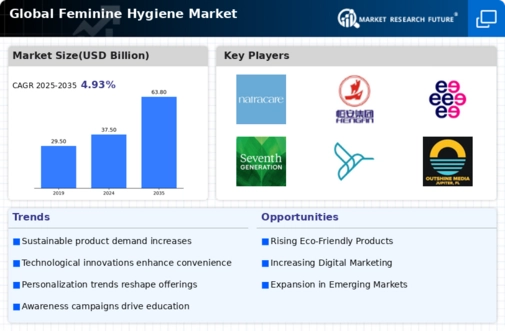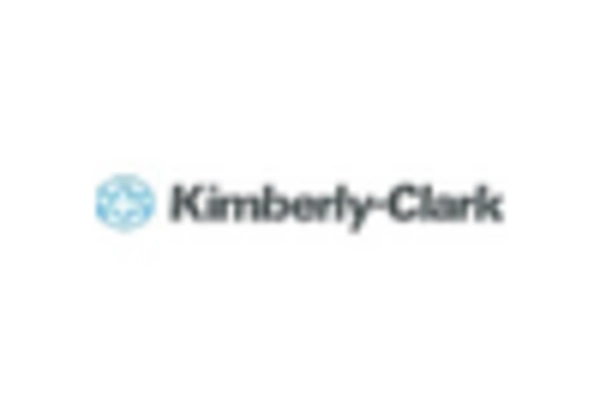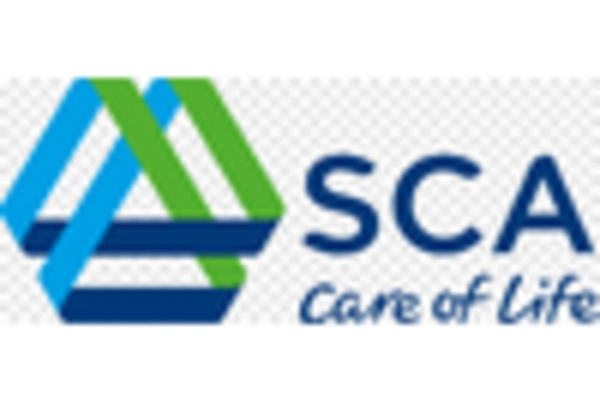Growing E-commerce Platforms
The proliferation of e-commerce platforms is transforming the way consumers access feminine hygiene products, thereby acting as a significant driver for the Feminine Hygiene Market. With the convenience of online shopping, consumers are more inclined to purchase these products from the comfort of their homes. Data indicates that online sales of feminine hygiene products have seen a substantial increase, with e-commerce accounting for a notable percentage of total sales. This shift towards online purchasing is likely to continue, as consumers appreciate the discretion and variety offered by e-commerce platforms, further propelling the Feminine Hygiene Market.
Cultural Shifts and Acceptance
Cultural shifts towards greater acceptance of discussing women's health issues are playing a crucial role in the Feminine Hygiene Market. As societal norms evolve, conversations surrounding menstruation and feminine hygiene are becoming more open and accepted. This cultural change is likely to encourage women to seek out and purchase feminine hygiene products without stigma. Market data suggests that regions experiencing these cultural shifts are witnessing a corresponding increase in product sales. This trend indicates that as women feel more empowered to address their health needs, the Feminine Hygiene Market is poised for growth.
Regulatory Support and Standards
Regulatory support and the establishment of standards for feminine hygiene products are emerging as vital drivers for the Feminine Hygiene Market. Governments and health organizations are increasingly recognizing the importance of ensuring product safety and efficacy. This regulatory framework not only enhances consumer trust but also encourages manufacturers to innovate and improve their offerings. As regulations become more stringent, companies are likely to invest in research and development to comply with these standards, which could lead to a more competitive market landscape. Consequently, the Feminine Hygiene Market may experience growth as consumers gravitate towards brands that adhere to high safety and quality standards.
Increased Awareness of Women's Health
The rising awareness regarding women's health issues appears to be a pivotal driver for the Feminine Hygiene Market. As educational initiatives proliferate, women are becoming more informed about the importance of maintaining proper hygiene. This heightened awareness is likely to lead to increased demand for feminine hygiene products, as women seek to prioritize their health. According to recent data, the market for feminine hygiene products is projected to grow at a compound annual growth rate of approximately 6% over the next few years. This growth is indicative of a broader trend where women are increasingly investing in their health and well-being, thereby propelling the Feminine Hygiene Market forward.
Technological Advancements in Product Development
Technological advancements in product development are significantly influencing the Feminine Hygiene Market. Innovations such as the introduction of organic and biodegradable materials are gaining traction among consumers who are increasingly concerned about environmental sustainability. Furthermore, the integration of smart technology into feminine hygiene products, such as apps that track menstrual cycles, is becoming more prevalent. These advancements not only enhance user experience but also cater to the evolving preferences of consumers. The market is expected to witness a surge in demand for technologically advanced products, which could potentially reshape the landscape of the Feminine Hygiene Market.


















Leave a Comment